 We’ve now completed a third rotation of the Player’s Handbook, meaning that almost every class has had every subclass from that book examined in the Class 101 series! Two classes with lots of subclasses—the cleric and wizard—will need a little extra time to cover. Starting this week, however, we’re moving away from the Player’s Handbook and taking a look at the brand-new subclasses that you’ll find in Tasha’s Cauldron of Everything!
We’ve now completed a third rotation of the Player’s Handbook, meaning that almost every class has had every subclass from that book examined in the Class 101 series! Two classes with lots of subclasses—the cleric and wizard—will need a little extra time to cover. Starting this week, however, we’re moving away from the Player’s Handbook and taking a look at the brand-new subclasses that you’ll find in Tasha’s Cauldron of Everything!
Our next new subclass from Tasha’s is a cleric whose devotion to order goes beyond righteousness, justice, and even the law itself. In some worlds, clerics of order are the enforcers of the law. In others, they may transcend mortal laws, and though they may work with lawmakers and peacekeepers, their devotion is not to the law of the land but to the highest ideal of order itself. This subclass originated in Guildmaster’s Guide to Ravnica, where its powers befitted the law enforcement arm of the Azorius Senate and the criminal enforcers of the Orzhov Syndicate.
Check out other articles in the Cleric 101 series, like our broad overview in Cleric 101: A Beginner’s Guide to Playing the Divine, and Cleric 101: Life Domain, Cleric 101: Knowledge Domain, and Cleric 101: Light Domain. If you’re interested in playing other classes, check out the entire Class 101 series.
Story of the Order Domain
“Halt, lawbreaker.” A man, armored from head to foot and obscured by a mask bearing a cold, impassive visage of steel, stood in the middle of a rainy city street, lit only by the flickering candlelight of the streetlamps. A thief dressed in simple street clothes over a suit of form-fitting leather armor, and holding a jingling sack of stolen gold turned to face him incredulously.
“Who the hell are you?” the thief took a cautious step back and scanned the heraldry on the cleric’s armor. “You’re not with the City Watch.”
“Nay.”
“And you can’t be a bounty hunter.”
“It is far too early for a price to be put on your head for a crime you’ve only just committed,” the cleric said with a laugh. But I would not accept a bounty, even if the Watch offered one.”
“Then who—what—in the Nine Hells are you? A mercenary…?”
The masked, armored figure laughed and took a step forward. The brass amulet around his neck gleamed as it caught the candlelight in a streetlamp—it bore an icon of a perfectly balanced set of scales. “I operate outside of the law. Higher than the law. I serve not the transient laws of mortalkind, but the ineffable order of the divine. I am not the law; I am a conduit for the righteous order of the cosmos.”
“You’re insane.” The thief’s heart was hammering in her chest, and she took another step back, turned, glanced over her shoulder, and then broke into a full run.
“And you are a fool.” The cleric’s voice echoed through the empty, lamp-lit streets, until the echo faded into the frantic, chaotic tattoo of raindrops striking the cobblestones. He raised a hand, and boomed, “I say again: Halt!” The single, commanding word rang out in the thief’s heart, and her steps slowed as its magic seized her will. The cleric’s metallic boots clacked against the stones, marking a stark, rhythmic contrast to the patter of the rain around him. The thief took a deep breath and screwed her eyes shut, drawing upon every ounce of composure she possessed and fought against the cleric’s spell, until—the magic snapped away, and her pace quickened again.
She turned about for a fraction of a second, just long enough to assess her pursuer’s location, pass a hand to her belt, and hurl a knife behind her as she took off again, this time diving for an alley. The knife whistled through the air and struck the cleric clean in his arm, which was covered only by a layer of padded cloth. The cleric of Order shouted in pain and stopped his inexorable march toward his quarry.
“You will obey me,” he growled, gritting his teeth as blood soaked his sleeve just as thoroughly as the rain. He reached out his unwounded arm and, with all five fingers outstretched, incanted another spell, then clenched his fingers shut. Suddenly, the thief’s muscles felt stiff as iron, and she froze. Momentum carried her forward, and her body crashed hard upon the rain-slick street.
The steady clacking of his boots rang out louder and louder until he was upon her. The cleric held out his good arm with his hand clenched in a paralyzing fist with every step, until he knelt down and used his wounded arm to turn her frozen face to stare into his metal mask, which was fashioned into a passive, even uncaring visage. Her face, too, was frozen in a mask of fear. She saw his breath misting out of his mask in the night air as he spoke in a low rasp.
“I am a conduit of divine order. And you will obey, thief.”
Order Domain Features
A divine domain is a suite of abilities innately tied to an aspect of a god’s divinity. A god may possess many domains within their expansive power, but a mortal being can only ever receive the powers of a single one. Clerics who receive the power of the Order Domain are arbiters of the law for the benefit of an orderly society. Some clerics of divine order are benevolent and kind, but just as many are cruel and draconian. Remember the classic D&D alignment chart; an Order cleric is fundamentally lawful by nature, but they may be good, evil, or anything in-between.
The cleric gains access to five subclass features at 1st, 2nd, 6th, 8th, and 17th level. You can read all of the Order Domain features in Tasha’s Cauldron of Everything. In summary, your subclass features allow you to:
- Gain proficiency with heavy armor and become a more commanding speaker
- Embolden your allies to attack whenever you target them with a spell
- Channel your god’s divine power to pacify nearby creatures
- Cast enchantment spells more quickly than usual
- Imbue your attacks with destructive power
- Curse targets when you damage them with your Divine Strike, causing them to take additional damage when your allies strike them
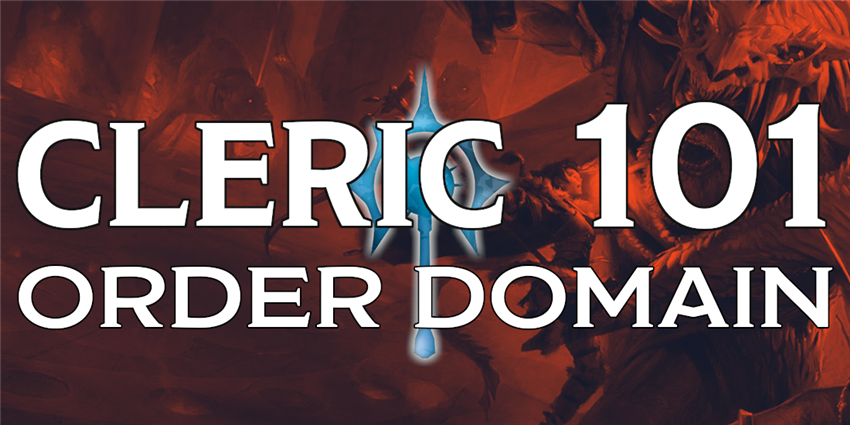
Benefits of the Order Domain
The Order Domain, like so many other subclasses in Tasha’s Cauldron of Everything, encourages you to use your powers for the benefit of your allies, not just yourself. Unlike most other classes who receive new subclasses in Tasha’s, however, the cleric class already focuses on supporting your entire party. Many of the Order Domain’s subclass features allow you to give your allies extra attacks or extra damage—essentially a boost to your overall damage, as long as you can coordinate with your teammates to take advantage of it.
Your 1st-level feature, Voice of Authority, is a prime example of this, giving you the unlimited ability to let an ally make an additional attack as a reaction whenever you target them with a spell of 1st-level or higher. This lets you focus on buffing your party with spells like bless and heroism, or healing them with spells like cure wounds and healing word, without forgoing the ability to deal damage on your turn. If you have a rogue in your party, healing them with cure wounds grants them an additional attack on your turn—which in turn lets them deal their Sneak Attack damage again, potentially causing a huge damage spike thanks to your healing!
Beyond this, your best features are ones that lock down foes, preventing them from moving, attacking, or otherwise causing trouble. Consider how these features interact with your character; are you a good guy who apprehends villains nonlethally so they may stand a fair trial, or are you a cruel authoritarian who uses these powers to make it easier to cause suffering for minor infractions?
Drawbacks of the Order Domain
As mentioned above, clerics of the Order Domain gain a great deal of power from coordinating with their allies—especially by giving allies a chance to attack as a reaction. If your party isn’t cohesive, or refuses to work with you as a team leader while in combat, some of your best features won’t work as intended. You can’t be a combat marshal if your allies won’t work together with you to gain a tactical advantage. Now, this may lead to some interesting ludonarrative assonance; an unruly party of players learns to make the most of your character’s powers, just as an unruly party of adventurers learns to work together tactically—but perhaps that’s being overly optimistic.
Additionally, some of your other best powers enhance your enchantment spells, making it easier to charm and befuddle foes. If your Dungeon Master runs a campaign that doesn’t play to your strengths, by running a game that’s all hack ‘n slash with no opportunity for social interaction or intrigue, you’ll find that some of your more interesting social features won’t have a chance to shine.
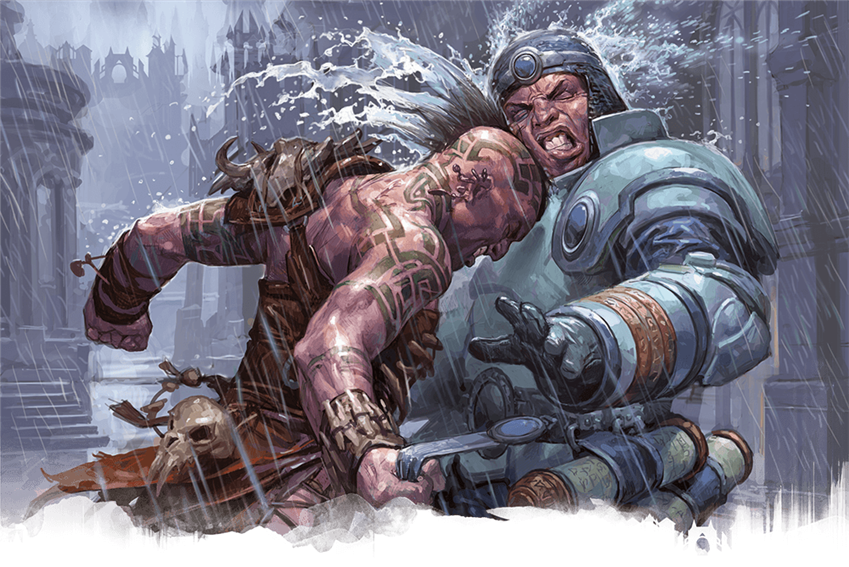
Suggested Build
As a cleric, you choose your subclass at 1st level. If you’re playing an Order Domain cleric, you’re likely going to be fighting toe-to-toe with foes, wielding melee weapons while armored to the gills in heavy armor. Because of this, you should play a race that improves your Wisdom score (to improve the power of your spells and class features) and your Strength score (to give you the strength to heft heavy armor and deal damage with melee weapons). However, thanks to the new “Customizing Your Origin” section in Tasha’s Cauldron of Everything, you don’t have to let your character’s race dictate their ability scores; you can reassign your racial ability score bonuses to any score you see fit.
If you’re playing without these new rules, there aren’t actually any races in the Player’s Handbook that give you bonuses to both Strength and Wisdom. Firbolgs from Volo’s Guide to Monsters do, but their nature-loving, easygoing ways make them an odd fit for the Order Domain. The same can be said for tortles from The Tortle Package, but likewise have an odd flavor clash. (Both of these races also appear in Explorer’s Guide to Wildemount.) If you’re playing in Ravnica, where the Order Domain originated, the centaur race has a natural bonus to both Strength and Wisdom—and their heavy, hammering hooves would seem to make them ideal candidates for a mounted police division in the city-plane of Ravnica. Likewise, the variant human race in the Player's Handbook is always a good choice.
Selecting EQUIPMENT when creating your cleric is a good idea; you’re proficient in heavy armor so you can select chainmail, but you aren’t proficient in martial weapons, so you can’t select a warhammer. Details like what type of holy symbol you wear are aesthetic decisions, and thus entirely up to you.

Spells
Fortunately, as a cleric, you have the entire cleric spell list available to you whenever you prepare spells at the start of the day. Nevertheless, when playing a cleric, it can help to have a typical spell list that your cleric always has prepared—unless you specifically choose otherwise. This can save you the trouble of having to re-select all your spells at the start of each day. Since your Domain Spells grant you a suite of useful combat spells, you may want to gear your spell selection towards spells that will help you in social or exploration scenarios.
As a 1st-level cleric, you know three cantrips and can prepare a number of 1st-level spells equal to 1 + your Wisdom modifier. Odds are, your Wisdom modifier will be either +2 or +3 right now, so you’ll be able to choose either three or four 1st-level spells whenever you complete a long rest. As a character that values both offense and support, the guidance and sacred flame cantrips will give you a little both that you can always rely on. Beyond this, your cantrips are simply a matter of preference, and almost any will serve you well.
You can prepare any 1st-level spells from the cleric spell list, but you can use this list of suggested spells to prepare an all-purpose spell loadout that will serve you in most circumstances. As you go on adventures and learn what dangers your character tends to face, you can personalize your spell loadout. Try to choose one spell labeled SUPPORT, one labeled DEFENSE, and one labeled OFFENSE. If you have a high Wisdom score and can prepare additional spells, choose others of your choice. Note that this list only includes some spells from the Player's Handbook and Tasha’s Cauldron of Everything, so if you want to choose more unusual spells, or have other sources like Xanathar's Guide to Everything, you'll have to do a little self-directed research. This list is just here to get you started if this is your first time playing an Order Domain cleric.
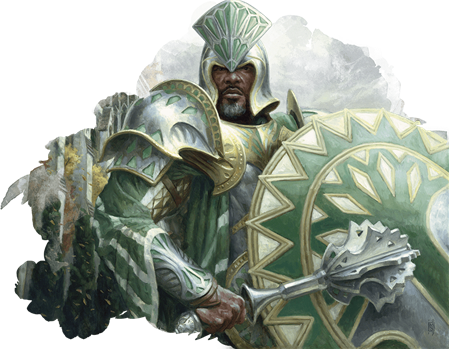
- Bless (SUPPORT)
- Bane (DEFENSE)
- Detect magic (EXPLORATION) [this spell can be cast a ritual, which means you can cast it without expending a spell slot, if you spend an extra 10 minutes casting it]
- Guiding bolt (OFFENSE)
- Healing word (SUPPORT)
- Inflict wounds (OFFENSE)
- Protection from evil and good (DEFENSE) [This spell requires that you have 25 gp worth of holy water, which the spell consumes]
- Shield of faith (DEFENSE)
Feats
Once you’ve improved your Wisdom score to 18 or 20, you can increase your power with a few useful feats. The following feats are good picks for Order Domain clerics, and will improve your reliability in your own desired area of expertise:
Crusher. This new feat from Tasha’s Cauldron of Everything gives you an edge when fighting with bludgeoning weapons. Most of the simple weapons you have access to are blunt weapons that synergize well with this feat—and its bonus effects are tactically useful in a way that clerics of the Order Domain appreciate, like forcing an enemy to move into a strategically disadvantageous position, or making it easier for your allies to hit them.
Fighting Initiate. This new feat from Tasha’s Cauldron of Everything makes you a more adept fighter. Since you’re going to be battling front-and-center with your allies often, it makes sense to give yourself an edge in combat.
Resilient (Constitution). You have a number of powerful spells that you must concentrate on to maintain. Taking damage in combat can spoil the full effects of a useful spell, so gaining proficiency in Constitution saving throws make you a much more reliable spellcaster!
War Caster. Just like Resilient (Constitution), War Caster makes you better able to maintain concentration on spells. The difference is that War Caster is specifically tailored to allow you to fight more easily while casting spells, whereas Resilient makes you tougher against all Constitution-related dangers, like poisons, certain spells, and so forth. Which do you choose? It depends on the kind of threats you’re facing in your campaign!
If you want more advice for building a cleric, check out Cleric 101. Have you ever played an Order Domain cleric? What advice would you give to players that want to make a character like this?
Create A Brand-New Adventurer Acquire New Powers and Adventures Browse All Your D&D Content
 James Haeck is the lead writer for D&D Beyond, the co-author of Waterdeep: Dragon Heist, Baldur's Gate: Descent into Avernus, and the Critical Role Explorer's Guide to Wildemount, a member of the Guild Adepts, and a freelance writer for Wizards of the Coast, the D&D Adventurers League, and other RPG companies. He lives in Seattle, Washington with his fiancée Hannah and their animal companions Mei and Marzipan. You can find him wasting time on Twitter at @jamesjhaeck.
James Haeck is the lead writer for D&D Beyond, the co-author of Waterdeep: Dragon Heist, Baldur's Gate: Descent into Avernus, and the Critical Role Explorer's Guide to Wildemount, a member of the Guild Adepts, and a freelance writer for Wizards of the Coast, the D&D Adventurers League, and other RPG companies. He lives in Seattle, Washington with his fiancée Hannah and their animal companions Mei and Marzipan. You can find him wasting time on Twitter at @jamesjhaeck.








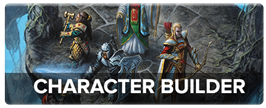
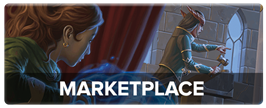
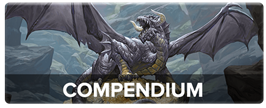
-
View User Profile
-
Send Message
Posted Dec 22, 2020This one was really cool, makes me wanna play a cleric
-
View User Profile
-
Send Message
Posted Dec 23, 2020Just to be clear, you wouldn't be able to use Sneak more than once per turn, the RAW specifically limits to Sneak attack once per round. This feature would work best with a hexblade or rogue with a hunters mark up, someone who does additional damage per hit
Sneak Attack
Beginning at 1st level, you know how to strike subtly and exploit a foe’s distraction. Once per turn, you can deal an extra 1d6 damage to one creature you hit with an attack if you have advantage on the attack roll. The attack must use a finesse or a ranged weapon.
You don’t need advantage on the attack roll if another enemy of the target is within 5 feet of it, that enemy isn’t incapacitated, and you don’t have disadvantage on the attack roll.
The amount of the extra damage increases as you gain levels in this class, as shown in the Sneak Attack column of the Rogue table.
-
View User Profile
-
Send Message
Posted Dec 23, 2020No part of the provided text states that it can only occur once per round. It says once per turn, not once per turn on your turn, or once per round. This is confirmed by Jeremy Crawford in regards to opportunity attacks. It's an excellent idea for an Order Domain Cleric to run within 5 feet of a foe, bonus action cast bless on the rogue and other allies, give the rogue a second sneak attack by virtue of positioning and then cast Toll The Dead on the wounded foe with extra damage.
-
View User Profile
-
Send Message
Posted Dec 27, 2020I got to play a few sessions with a LN Order Cleric of Jergal (god of the scales, under world) that was quite fun. I played him as a face character actually, who was as likely to strike a deal with the denizens of the underdark than fight them. His quest was to collect the stories of heroism and great deeds of those who had died, so they could be judged in the afterlife. The only downside was he was just support really, once the party lost their tanks and skulkers, I had to swap him out for a tank myself. I do hope to play him in another group some day, "Inki" the Chronicler of the Dead.
-
View User Profile
-
Send Message
Posted Dec 27, 2020This may be the single strongest 1 level splash in the game for other spellcasters. I have a Glasya Tiefling Gloom Stalker 5 / Divine Soul 5 / Cleric of Order 1. The Cleric of Order was the last addition, and it made a huge change in the effectiveness of the entire party.
-
View User Profile
-
Send Message
Posted Dec 29, 2020I'm sure I cant be the only person that thought of Judge Dredd as they were reading the narrative. Playing a Swords Bard right now, but I will definitely make a Order Domain Cleric as my back up character now.
-
View User Profile
-
Send Message
Posted Dec 30, 2020And in current 5e lore, St. Cuthbert is an Order Domain god.
-
View User Profile
-
Send Message
Posted Jan 9, 2021So why sacred flame over toll the dead?
-
View User Profile
-
Send Message
Posted Jan 9, 2021Toll the dead is in XGtE, usually they only reference PHB stuff in here. Toll the dead is better though ;)
-
View User Profile
-
Send Message
Posted Jan 27, 2021Yes, but both of those are worse than any 1d8 damage spells with an attack roll. Reason being, 5e puts the save DC two points too low. For an attack to be equivalent to a save, the save DC should be 10 + ability modifier + proficiency bonus (not 8+mod+prof as per RAW). RAW any spell with a save is equivalent to an attack with a -2 to its to hit modifier, and though that may not seem like a lot, two points of bonus or penalty to a d20 roll is a lot. It is a full 10% increase or decrease in probability of success, meaning the chances of a toll the dead hitting against many enemies is low. Particularly as CON is often very high in monsters. Yes, I know it does a lot of damage (of a type that is not commonly resisted), so it would be unbalanced if it was too powerful, but no player likes a combat in which you spend your turn in three successive rounds to deal zero damage due to enemies successfully saving. If it wasn't that my personal campaign is online, then I would make a houserule to make your save DC 2 more than it is RAW.
Rant over.
-
View User Profile
-
Send Message
Posted Jan 27, 2021It is true that spell saves are 2 lower than the average to hit roll, but their opposing number is also typically lower. if a Dc 15 saving throw is contested by a +1 Wis save the chance of the effects landing is 65%, while at the same time if a Spell Attack with a +7 was targeting an ac of 15 there would also be a 65% chance of the effect landing.
Toll the Dead is a Wis save so let's compare it to, let's say, Produce Flame against a Goblin as a 5th level caster
Dc 15 Wis save vs 8(-1) Wisdom - 75% chance to affect - 9 to 13 damage depending on injury - 6.75 to 9.75 average damage after hit/miss
+7 Spell Attack vs 15ac - 65% chance to affect - 9 damage - 5.85 average damage after hit/miss
Some monsters are better targeted by their armor class and others by their saving throws, as a spellcaster I tend to lean into saves because our fighter can tromp monsters with low ac's but I can crack the high ac targets like Hobgoblins with their easier to hit saving throws, but since you have leveled spells that will do that it's also practical to take attack cantrips to balance yourself out better as well. One option is not strictly better than the other, like many spells they are situationally better or worse than each other.
-
View User Profile
-
Send Message
Posted Jan 27, 2021I generally go for mostly saves too, mostly because most save spells still affect creatures who succeed, so you don't feel like you wasted the slot.
-
View User Profile
-
Send Message
Posted Jan 28, 2021There is also a wealth of ways for attack rolls to give and get disadvantage on attack rolls. Advantage on saving throws is more rare to have and to gain (at least at lower levels).
-
View User Profile
-
Send Message
Posted Jan 28, 2021Wisdom saves (and dexterity saves) are one of the more common saves for monsters to be good at. Maybe I'm just getting a tonne of bad rolls, but even with an 18 in your casting stat your save DC is 14 at level 1-4? Most of the interesting monsters will succeed on a DC 14 WIS save more of the time than not, same for DEX. And if you use the standard array, then the most you can get is DC 12, which is like... awful. Even when you reach level 5, and have a proficiency bonus of +3, your saving throw cantrips (which never have half damage on success) still are likely worse than the fighter's weapons. And they most likely have got a +1 weapon or two by the time you have reached level 5, making the advantage the fighter has ever greater.
All players I've seen use cantrips all the time in combat, so my opinion is that a cantrip should always be at the same power as a fighter's weapons. Though I also think that fighters should get more limited use features (not exclusive to the standard fighter, i.e. the battle master [don't get me started on how trash the champion is]), rather than relying on their at-will features, i.e. weapons.
Of course sometimes I (the DM) don't want one of my casters to have too high a spell save DC, because they are always casting AoE spells with a DEX save when most of the party other than the caster is in melee range with the enemy (the classic "fireball" situation, though I don't think my party has yet done it with a fireball, though it is only a matter of time...
-
View User Profile
-
Send Message
Posted Jan 28, 2021The highest you can get in levels 1-3 is a dc 13 (put the 15(+2) in your WIS and plug at least a +1 into it from your race for a 16(+3)) and it’s true that that save is very low, however it goes to 14 at level 4 and than 15 by level 5.
by design the fighters basic attacks are stronger because casters get leveled spells, but that’s mostly represented in the bonus STR or DEX boost to the damage. To succeed on a 5th level DC of 15 more times than not a creature would have to have an above average WIS save of at least +5, similar to a creature toting an 19 ac against a 5th level fighter. Only 20/144 (13.89%) of CR5 monsters in D&D beyond’s database have a WIS save that high or higher while only 15/144 (10.41%) have an ac of that high or higher. The 3.48% disparity is more than mad up for by the ability for a caster to take both Toll the Dead and Produce Flame allowing them to target either the save or the ac depending on which they think is higher. However this is mitigated by a fighter’s damage looking like 2d8+8 while a cantrip would be 2d8+0, making fighters consistently edge ahead of non-resource-consuming-damage. This is fine though because a caster has spells like Fireball that make their resource-consuming-damage typically higher.
most campaigns will have only a single magic weapon, if any, by 5th level and many times it isn’t the one that the fighter has specialized towards. An example would be the magic short sword in COS or the magic long sword in DoIM that hold less value for a sharpshooter ranger or a GWM fighter. Cantrips always do magic damage which is super helpful early on before the team gets kitted out by 7-9th level. Of course this changes adventure to adventure, and home brew games are entirely DM caveat, but the potency of ignoring physical resistance shouldn’t be shoved aside.
-
View User Profile
-
Send Message
Posted Apr 7, 2021On the other hand, they probably work well with the more law-inclined classes, like wizards, monks, or paladins.
-
View User Profile
-
Send Message
Posted Jun 3, 2021Gotta try this with the new UA Draconic Kobold.
Roar so the party gets advantage on attacks, cast Bless, rogue does a reaction sneak attack (with advantage).
Talk about a massive round or two for the party, at a dirt cheap cost.
-
View User Profile
-
Send Message
Posted Aug 5, 2021Excellent article as always. Order Domian strikes me as a great choice for players that want play a "Judge Dredd" type character.
-
View User Profile
-
Send Message
Posted Feb 13, 2023Sarella:"...Almost like a Paula Abdul single with a dancing cat"
Me the DM: Okay you roll maximum damage crit with Hideous Laughter. (insert completely dying of laughter)